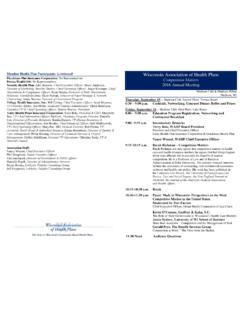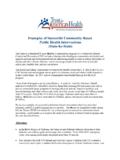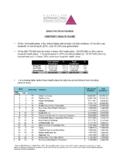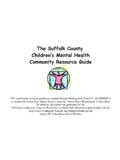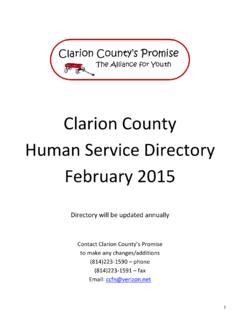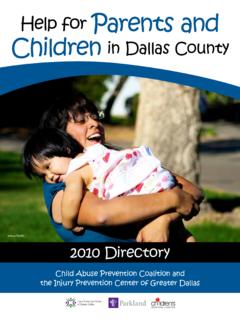Transcription of community, country, and global levels in …
1 For the firsttime in historywe have theresources andthe knowledge to overcome thelethal threats toglobal healthequityHuman Resources for HealthOvercoming the crisisOvercoming the crisisJoint learning InitiaIn this analysis of the global health workforce, the Joint learning initiative a consortium of more than 100 health leaders proposes that mobilization and strengthening of human resources for health is central to combating health crises in some of the world s poorest countries and for building sustainable health systems everywhere. This report puts forward strategies for the community, country, and global levels in overcoming this crisis through cooperative learning InitiativeGlobal Equity InitiativeHarvard UniversityHuman Resources for health : Overcoming the Crisis Copyright 2004, The President and Fellows of Harvard CollegeLibrary of Congress Cataloging-in-Publication Data has been applied 0-9741108-7-6 The Joint learning initiative (JLI), a network of global health leaders, was launched by the Rockefeller Foundation and was supported by a secretariat at Harvard University s global Equity initiative (GEI).
2 The JLI acknowledges the generous financial support of the Rockefeller Foundation, Swedish Sida, the Bill & Melinda Gates Foundation, the Atlantic Philanthropies, and the World health Organization in the production of this report. The responsibility for the contents and recommendations of the report rests solely with the leadership of the JLI, with Harvard University s GEI assuming ultimate technical and corporate credits: Cover, title page, and pages 39, 40, 99, and 100, Lincoln C. Chen; pages 11 and 12, Jacob Silberberg/Panos Pictures; pages 63, 64, 131, and 132, Carol Kotilainen. Editing, design, and production by Communications Development Incorporated in Washington, , with art direction by its partner, Grundy Northedge. vii Preface x Abbreviations 1 Executive Summary 13 Chapter 1 The Power of the health Worker 14 Today s health crisis 16 Fresh opportunities 18 health workforce crisis 21 Why health workers are so important 26 Workers as a global health trust 29 Five clusters of countries 41 Chapter 2 Communities at the Frontlines 42 Workers at the frontlines 49 Workers in community systems 53 Mobilizing health workers 65 Chapter 3 Country Leadership 66 Engaging leaders and stakeholders 68 Planning human investments 70 Managing for performance 84 Developing enabling policies 88 learning for improvement 101 Chapter 4 global Responsibilities 102 Migration: Fatal flows 112 Knowledge: An under-tapped resource 117 Financing.
3 Investing wisely 133 Chapter 5 Putting Workers First 134 Strengthening sustainable health systems 137 Mobilizing to combat health emergencies 138 Building the knowledge base 139 Completing an unfinished agenda: Action and learning 143 Appendix 1 Glossary 149 Appendix 2 Quantitative Information 181 Appendix 3 Joint learning InitiativePage numberContentsivv Boxes 19 HIV/AIDS: Triple threat to health workers 33 Norms or standards? 34 Shortages giving a sense of scale 44 The invisible workforce 51 Recruiting locally is the most important first step 53 SEWA s community financing 54 Smallpox eradication in India: Tensions and harmony with the health system 55 Ethiopia s military mobilizing against HIV/AIDS 56 Mobilizing workers to eradicate polio 58 Primary health care workers in Costa Rica 69 Workers on strike 76 Ghosts and absentee workers 82 Networks for learning and health 83 Professional associations as partners 86 Iran s revolution in health 88 Human resources in transitional economies 107 Codes of practice on international recruitment 108 The global Commission on International Migration 110 Cuba s international health workforce 111 health worker migration.
4 A global phenomenon 115 Toolkits for appraising health workforces 116 The PAHO Observatory of Human Resources in health 120 Tanzanian health workforce: Impact of stabilization, adjustment, and reform 121 Ghana: Initiatives in human resources for health 123 Worker-friendly donor policies 135 Key recommendations 137 High stakes, high leverage 140 Action & learning initiative Figures 3 1 Human resources and health clusters 5 2 Managing for performance 7 3 Investing in national capacity for strategic planning and management 10 4 Decade for human resources for health 15 Life expectancy advancing and slipping 22 The glue of the health system 24 health service coverage and worker density 25 Higher income more health workers 26 More health workers fewer deathsPage numberPage number 27 Stocks and flows 29 Worker density by region 30 Human resources and health clusters 32 Five clusters 42 Human resource functions for health 43 Family workers at the base of the pyramid professionals at the top 48 Sample survey of national workforce patterns 50 Achieving balance in accountability 66 Key dimensions of country strategies 71
5 Managing for performance 78 Workers want more than money 80 Huge regional disparities in medical schools and graduates 81 Investment pipeline of learning 102 Foreign-trained doctors can make up a third of the total number of doctors 103 New registrants from sub-Saharan Africa on the UK nursing register 104 South Africa: Main channels for out and in-migration 119 Investing in national capacity for strategic planning and management 183 JLI working groups 197 JLI meetings and consultations Tables 46 Community health workers in Asia 118 Recent trends in development assistance for health 157 global distribution of health personnel 163 global distribution of medical schools and nursing schools 169 Selected health indicators 174 health workforce financingPrefaceviiPrefaceThis report presents the findings and recommendations of the Joint learning initiative (JLI), an enterprise engaging more than 100 global health leaders in landscaping human resources for health and in identifying strategies to strengthen the workforce of health systems.
6 Why did we embark on this journey? What was our destination? And what did we do along the way?The JLI was launched because many of us believed that the most critical factor driving health system performance, the health worker, was neglected and overlooked. At a time of opportunity to redress outstanding health challenges, there is a growing awareness that human resources rank consistently among the most important system barriers to progress. Paradoxically, in countries of greatest need, the workforce is under attack from a combination of unsafe and unsupportive working conditions and workers departing for greener pastures. While more money and drugs are being mobilized, the human foundation for all health action, the workforce, remains under-recognized and address this gap, the JLI was designed as a learning exercise to understand and propose strategies for workforce development. Seven working groups were established: supply, demand, priority diseases, innovations, Africa, history, and coordination.
7 The open, collaborative, and decentralized design enabled each autonomous working group to draw the best from its diverse membership. Working groups were encouraged to ask tough questions, bring new ideas to the surface, and foster creativity and JLI s work was conducted in three phases. In a planning phase in 2002, leaders were recruited, a program framework was developed, and the work agenda was planned. 2003 was devoted to literature reviews, research, and consultations. More than 50 papers, many cited in this report, were commissioned, and more than 30 consultations were conducted around the world. These consultations engaged partner organizations and provided opportunities for us to listen to the voices of the health workers themselves. A third phase in 2004 focused on analyses and distilling lessons to generate the evidence base for the advocacy and dissemination of the JLI s findings and JLI benefited from a truly unique combination of participation and leadership.
8 Our co-chairs and members all volunteered their talents and time. Very importantly, an early priority was to achieve consensus that equity in global health would form the bedrock value for all JLI endeavors. This report thus represents not simply an analytical product but also an expression of our collective social commitment. As our interactions intensified over time, professional collegiality and personal friendships emerged. Even more important, mutual trust characterized our evolving relationships. This exceptional process was facilitated by the flexible financing provided by our core donors: the Rockefeller Foundation, the Swedish International Development Cooperation Agency (Sida), the Bill & Melinda Gates Foundation, and The Atlantic the release of this report, the JLI has reached its destination. Given the challenges before us, completing this first leg simply launches us into the next phase of the journey.
9 We in the JLI invite our colleagues and allies to join us on this road of strengthening human resources for health . Our hope is that this report, however modestly, illuminates the path ahead for us all. Lincoln C. Chen Tim EvansCo-chairs, JLI CoordinationJLI Coordination working group membersOrvill AdamsJo Ivey BouffordMushtaque ChowdhuryMarcos CuetoLola DareGilles DussaultGijs ElzingaElizabeth FeeDemissie HabteMarian JacobsJoel LamsteinAnders NordstromAriel Pablos-MendezWilliam PickNelson SewankamboGiorgio SolimanoSuwit WibulpolprasertixJLI working group co-chairsCoordinationLincoln Chen, Harvard University, USA Tim Evans, World health Organization, SwitzerlandDemandOrvill Adams, World health Organization, Switzerland Suwit Wibulpolprasert, Ministry of Public health , ThailandSupplyNelson Sewankambo, Makerere University, Uganda Giorgio Solimano, University of Chile, ChileAfricaLola Dare, Center for health Science Training, Research and Development International, Nigeria Demissie Habte, BRAC School of Public health , BangladeshPriority diseasesMushtaque Chowdhury, BRAC, Bangladesh.
10 And Columbia University, USA Gijs Elzinga, National Institute of Public health and Environment, The NetherlandsInnovationsJo Ivey Boufford, New York University, The Wagner School of Public Service, USA Marian Jacobs, University of Cape Town, South AfricaHistoryElizabeth Fee, National Library of Medicine: National Institutes of health , USA Marcos Cueto, Universidad Peruana Cayetano Heredia, PeruGender task forceHilary Brown, World health Organization, Switzerland Laura Reichenbach, Harvard Center for Population and Development Studies, USAA bbreviationsxAbbreviationsAIDS Acquired immunodeficiency syndromeCIDA Canadian International Development AgencyDFID Department for International Development, United KingdomDOTS Directly observed treatment, short-courseFAIMER Foundation for Advancement of International Medical Education and ResearchG-8 Group of EightGAVI The global Alliance on Vaccines and ImmunizationGDP Gross domestic productGNI Gross national incomeGTZ Deutsche Gesellschaft f r Technische ZusammenarbeitHDI Human development indexHIPC Heavily indebted poor countryHIV Human immunodeficiency virusHRH Human resources for healthILO International Labour OrganizationIMF International Monetary FundJLI Joint learning InitiativeMDGs Millennium Development GoalsMTEF Medium-term expenditure frameworkNGO Nongovernmental organizationODA Official development assistanceOECD Organisation for Economic Co-operation and DevelopmentOSI Open Society InstitutePAHO Pan American health OrganizationPEPFAR President s Emergency Plan for AIDS Relief.










